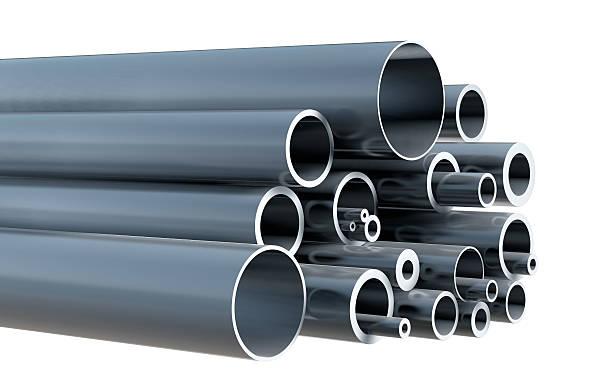
In industrial applications, the terms “tube” and “pipe” are often used interchangeably, creating confusion among engineers and procurement professionals alike. Understanding the specific characteristics of stainless steel tubes becomes essential for proper material selection. This misunderstanding can lead to costly specification errors and project delays.
Stainless steel tube differs significantly from pipe in manufacturing standards, dimensional tolerances, and intended applications. Quality stainless steel tube products maintain superior dimensional accuracy compared to standard pipe alternatives. These distinctions become critical when precision, surface finish, and structural integrity determine project success or failure.
Dimensional Standards and Measurement Methods
- Outside Diameter Specifications: Stainless steel tubes are measured by outside diameter (OD) with precise wall thickness tolerances. This measurement system ensures consistent fitting compatibility across different manufacturers and applications. Standard sizes range from 1/8 inch to 12 inches OD, with wall thickness variations as tight as ±0.005 inches.
- Tolerance Requirements: Manufacturing tolerances for stainless steel tubes are significantly tighter than pipes. Tubes maintain dimensional consistency within ±0.001 to ±0.005 inches, depending on grade and application requirements. These precise tolerances eliminate the guesswork in critical assemblies where component fit cannot be compromised.
Surface Finish and Quality Standards
- Interior Surface Smoothness: Stainless steel tubes feature superior interior surface finishes, often achieving roughness values below 32 microinches Ra. This smooth finish prevents contamination buildup and reduces pressure drop in fluid transport applications. The enhanced surface quality directly impacts system efficiency and maintenance requirements.
- Manufacturing Process Impact: The tube manufacturing process includes additional steps for surface conditioning and dimensional control. Cold drawing and annealing procedures create uniform grain structure and eliminate internal stresses. These manufacturing refinements result in consistent mechanical properties throughout the tube length.
High-Precision Industrial Applications
Stainless steel tubes excel in applications demanding exceptional accuracy and cleanliness standards. Medical device manufacturing relies on tubes for surgical instruments, implants, and diagnostic equipment where contamination risks must be eliminated.
The automotive industry utilizes stainless steel tubes in fuel injection systems, exhaust components, and hydraulic assemblies. Dimensional consistency ensures proper sealing and prevents system failures that could compromise vehicle safety and performance.
Pressure Rating and Structural Performance
- Wall Thickness Calculations: Stainless steel tubes offer predictable wall thickness distributions, enabling accurate pressure rating calculations. Engineers can specify exact wall dimensions without safety margins required for pipe applications. This precision reduces material costs and system weight in critical applications.
- Burst Strength Characteristics: The controlled manufacturing process creates uniform burst strength properties throughout the tube. Testing standards like ASTM A370 provide reliable mechanical property data for design calculations. This consistency eliminates the uncertainty associated with variable wall thickness in pipe products.
Cost Considerations and Material Selection
Material costs for stainless steel tubes reflect the additional manufacturing precision and quality control measures. The initial price premium often provides long-term savings through reduced maintenance, fewer replacements, and improved system reliability.
Procurement teams must evaluate total cost of ownership rather than initial purchase price. System downtime, replacement labor, and quality failures can exceed the material cost difference between tubes and pipes by significant margins.
- Grade 316L tubes:Excellent corrosion resistance for pharmaceutical and food processing applications.
- Grade 321 tubes:High temperature stability for aerospace and power generation systems.
- Grade 904L tubes:Superior resistance to chloride stress corrosion cracking in marine environments.
- Duplex 2205 tubes:Enhanced strength and corrosion resistance for oil and gas applications.
Quality Assurance and Testing Standards
- Mill Test Report Requirements: Stainless steel tubes include comprehensive mill test reports documenting chemical composition, mechanical properties, and dimensional verification. These certificates provide traceability and compliance documentation required in regulated industries. Quality assurance extends beyond basic material properties to include surface finish measurements and dimensional accuracy verification.
- Non-Destructive Testing Methods: Advanced testing procedures including eddy current, ultrasonic, and hydrostatic testing ensure tube integrity. These quality control measures identify potential defects before installation, preventing costly field failures. Testing documentation supports warranty claims and regulatory compliance requirements.
Conclusion
Stainless steel tube selection requires careful consideration of dimensional tolerances, surface finish requirements, and application-specific performance criteria. The precision manufacturing and enhanced quality standards justify the investment in critical applications where system reliability cannot be compromised. Contact qualified suppliers to discuss specific tube requirements and ensure proper material specification for your next project.
Featured Image Source: https://media.gettyimages.com/id/460659427/photo/stack-of-various-steel-pipes-on-white-background.jpg?s=612×612&w=0&k=20&c=FSv2TteKfQVyMH18W05taE1Q5ZhNBWqFKlY4a3it_EY=
